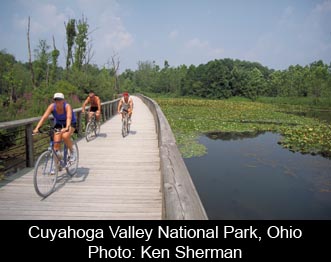
The Ken Burns documentary series beginning Sunday evening on PBS bills our national parks as "America's best idea," a phrase borrowed from author Wallace Stegner. But lost in the excitement about the series may be the understanding that this "best idea" is not complete.
Our national parks are a remarkable system of more than 390 iconic public landscapes, natural areas, and historic sites. According to the service's 2008 director's report, the system encompasses more than 84 million acres, including 43,000 miles of shoreline, 12,000 miles of trails, and 85,000 miles of rivers and streams.
Like most Americans, I have my favorites among the parks: where I live in the Bay Area these are Golden Gate National Park and the Point Reyes National Seashore. When I travel, I try to visit a new national park whenever I can. In September I biked the carriage roads and stunning loop road on Mount Desert Island in Maine's Acadia National Park. (By the way, much of that park was originally a gift to this country from the Rockefeller family, who also gifted critical lands to help create Grand Teton and Virgin Islands national parks, among many others.)

With this bounty of national parks, it is easy to miss that the system is unfinished in several important ways. Many of the parks encompass private lands, known as inholdings -- often old homestead or mining claims present when the park was created. According to the National Park Service the system includes more than 4.2 million acres of inholdings.
Some inholdings can be quite large, such as 225 acres surrounded by Virgin Islands National Park and including one of its most popular beaches, which conservationists began adding to the park this year. Or they can be quite small, such as the last house on the block being added to the Martin Luther King, Jr. National Historic Site in Atlanta next month. But whether an inholding is large or small, its sale or development can threaten public access for recreation and the integrity of a park's wildlife habitat, and complicate the management of natural resources and recreation.
The National Park system is also incomplete in that it needs to grow to keep pace with the recreational needs of our ever-increasing population. If we don't grow the system, we risk loving to death the parks that we have. And nowhere is this truer than in and around cities, where most of us live. We need new and expanded national parks, especially in our urban areas. The most important source of funding for completing or adding to existing parks and creating new ones is the federal Land and Water Conservation Fund, now under consideration in Congress for full funding, which I wrote about recently.
So enjoy the Ken Burns documentary -- I certainly expect to -- but remember that the National Park system is as much about the future as about the past. If the national parks are our "best idea" they are surely worth our continuing investment.
